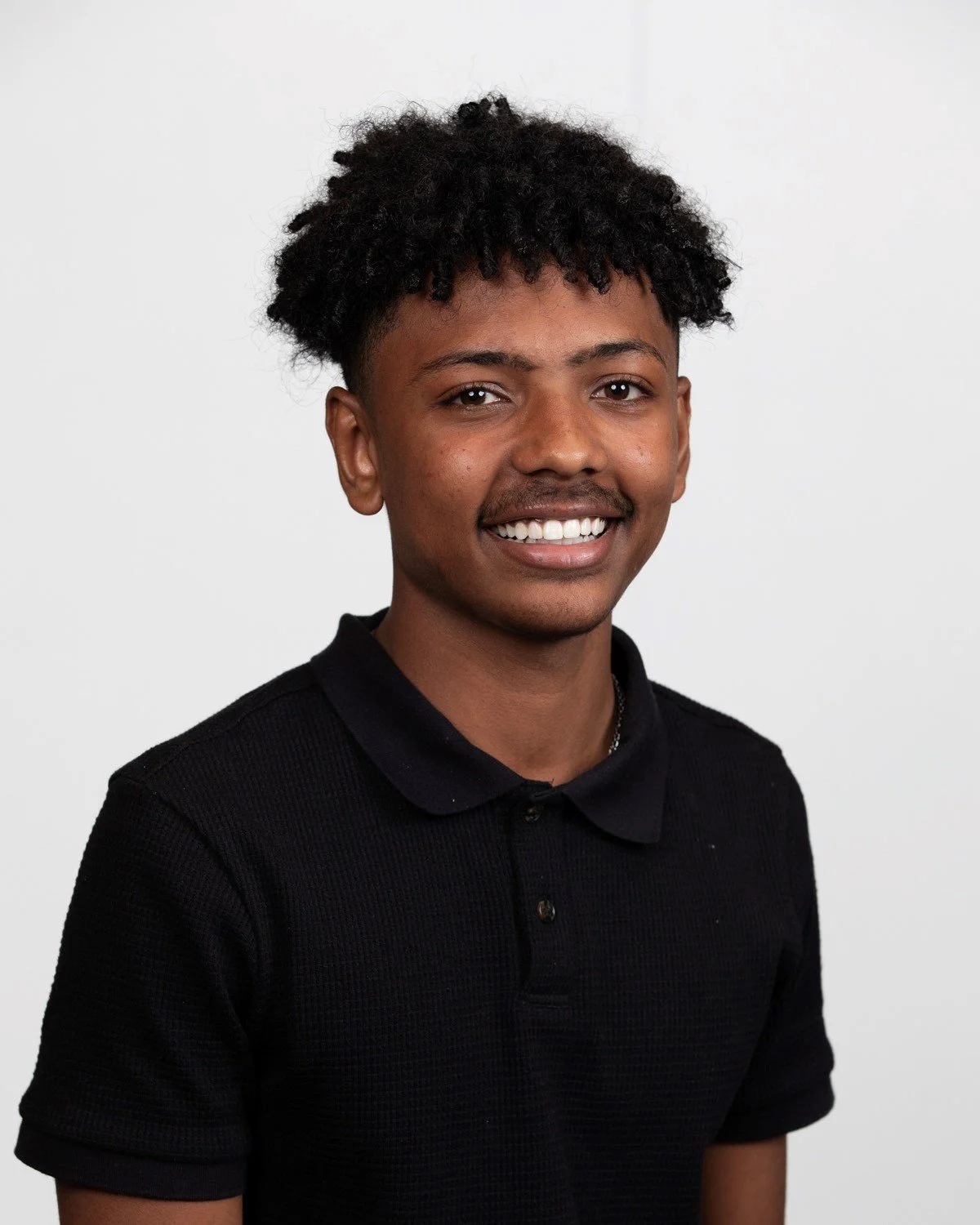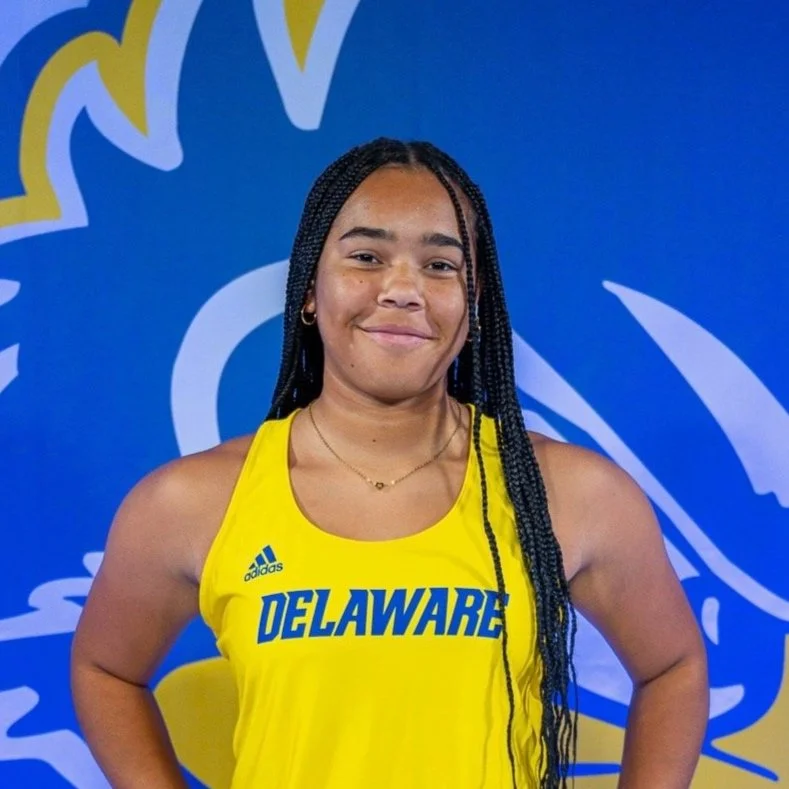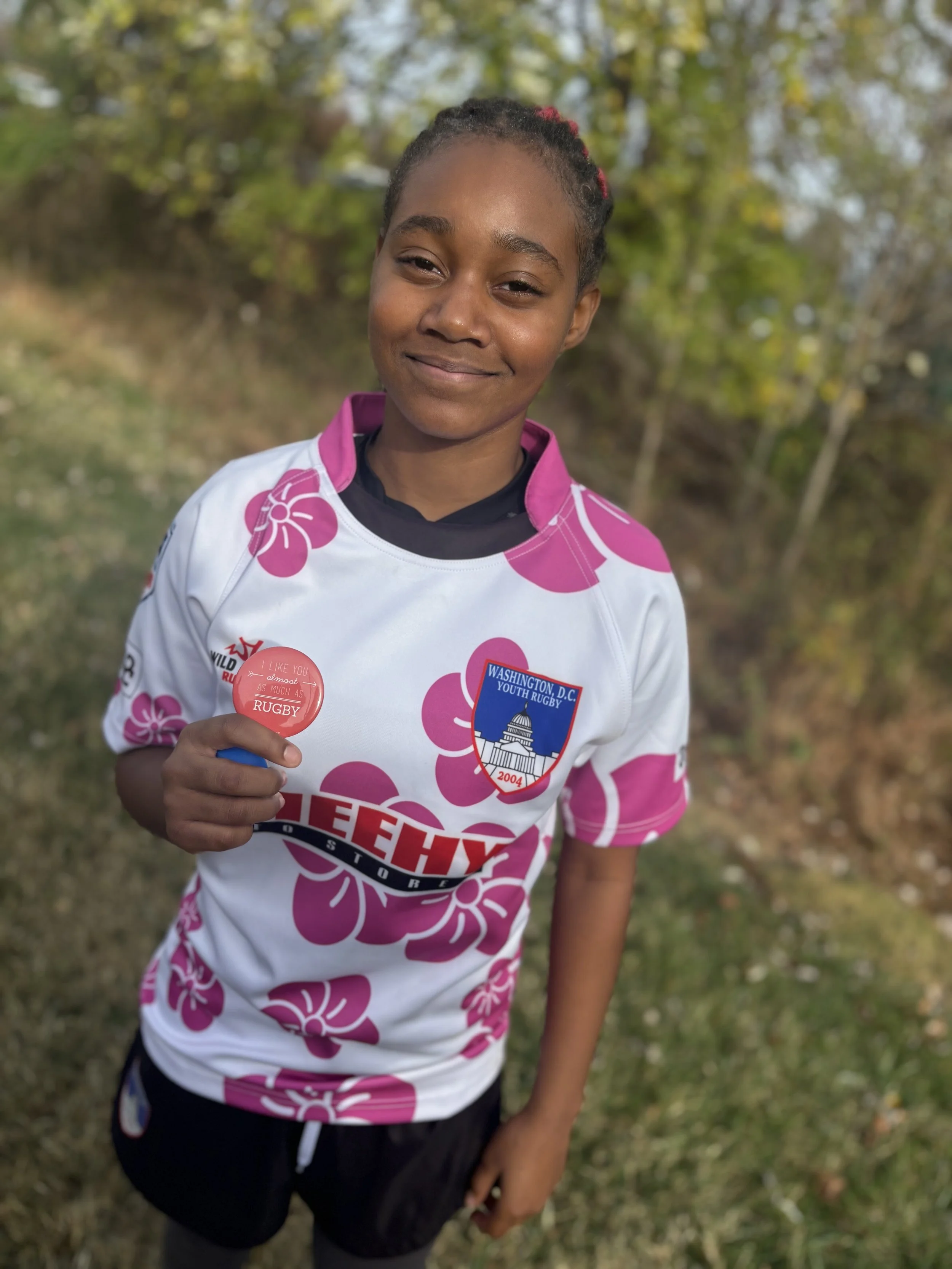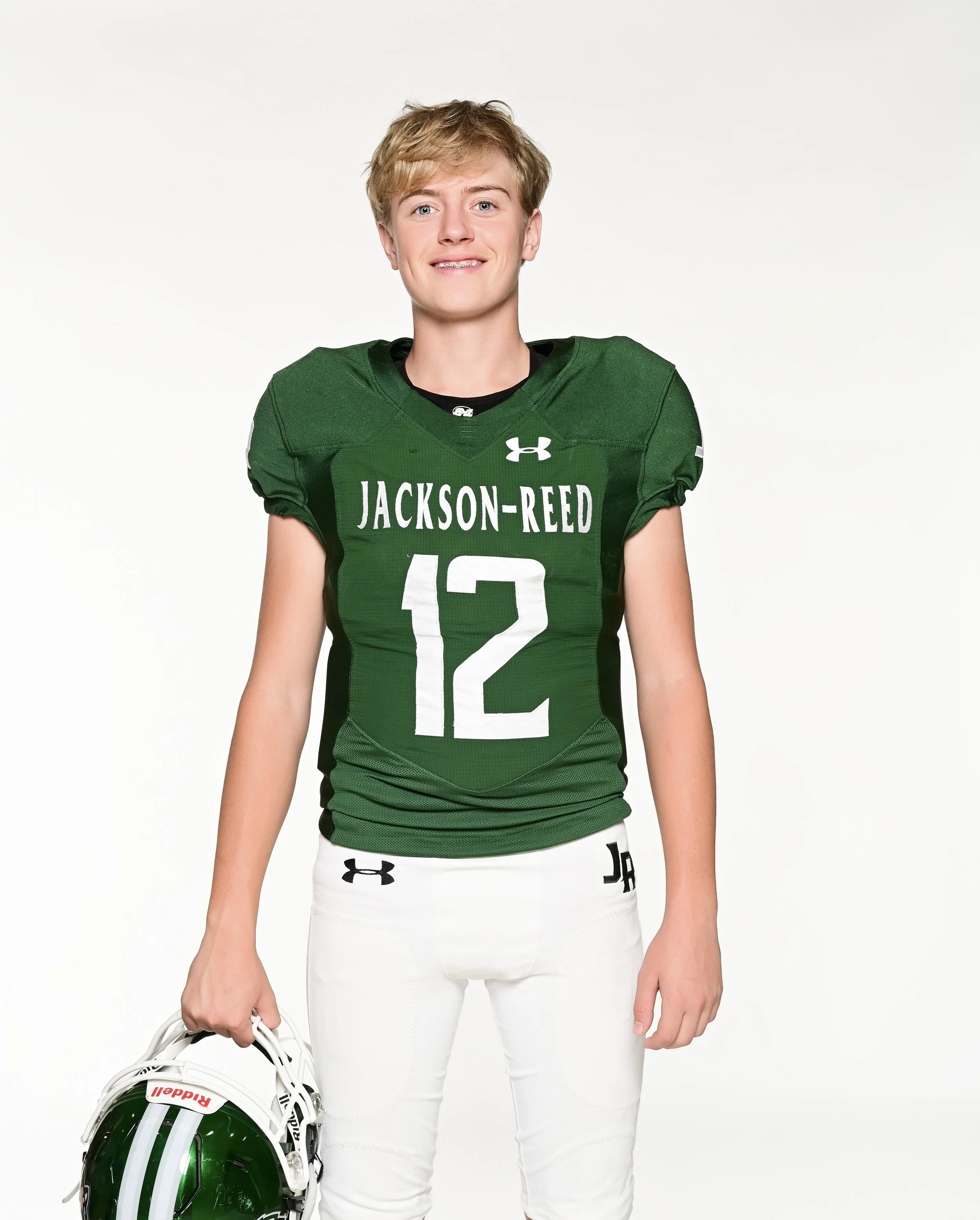Photo: BREC
It’s Play #1 in the Project Play framework: Ask Kids What They Want. The following youth profiles come from the Aspen Institute’s State of Play Washington D.C. report. The report assesses the opportunities and barriers for more children to access sports and physical activity in our nation’s capital.
Nathan Asres
Madison Bess
Madison Bess and Nathan Asres, 17
For a couple hours, Dunbar High School students feel their stress disappear while on a bike.
“Biking has helped my mental health a lot,” said senior Nathan Asres.
“When I ride, I can just be free and relax,” said Madison Bess, also a senior.
P.E. teacher Alex Clark started the bike club to keep young people off the streets during the pandemic, a period when five Dunbar students were shot and killed. Clark created a nonprofit called Prime Ability, which began with community rides and now includes 22 D.C. students on a cycling team in the Maryland National Interscholastic Cycling Association. The students come from all over — Dunbar, School Without Walls, Banneker and McKinley Tech.
Financing the team is challenging, making partnerships with nonprofits crucial. Registration fees for races alone cost $13,000, not counting expenses to transfer, maintain and fix bikes. Prime Ability received a $10,000 grant from DPR in 2023.
“I think about (funding) all the time,” Clark said. “I pray it doesn’t come to a point where we can’t run the program anymore.”
Clark recruited Madison and Nathan through P.E. classes. Madison works with friends to structure the rides, picking three destinations for each session and creating questions or scenarios about mental health for fellow students to discuss.
How do you cope with your mental health? Has there been a time when you feel like you couldn’t manage it? If something happens in your family, how does that affect your mental health?
“A couple days before the ride we’ll practice on how to get there and how to get back,” Madison said. “We’ll practice the elevation of our voices and act like we’re in that situation. Then we make a flyer and print out everything that’s going to happen. I see a lot of kids catching on because of how fun it is.”
Nadia Lytle
Nadia Lytle, 18
Good luck being a shot putter in Washington D.C. Ask Nadia Lytle, a senior without a permanent place to practice at School Without Walls, which has no sports facilities.
A future scholarship athlete at the University of Delaware, Nadia struggles to find throwing circles for her event. Any venues with circles are usually locked, or local fields are not well kept.
Nadia used to practice at a field outside Banneker Community Center, about a 45-minute Metro ride from her school. Banneker doesn’t have a throwing circle, so School Without Walls bought a portable circle and Nadia threw off the end of the track into a grassy area.
“But one day some parks person came and yelled at me for doing that,” Nadia said. “He was talking about permits. I’ve been practicing there for three years, and it had never been a problem.”
Later, Nadia noticed a tree planted in front of where she threw. “I think that was maybe a message to have me stop because my throws were making dents in the grass,” she said.
School Without Walls shifted practices to Dunbar High School, which has a quality throwing circle and track. Because Nadia is her track and field team’s only thrower and given the limited facility space, she often practices alone before school, missing out on being around friends.
“It’s not fun having to train by myself when the entire team is together,” she said.
Nadia also plays soccer for School Without Walls, whose home field is at The Fields at RFK, about a 45-minute Metro ride for each practice. “Our top rival has a soccer field right outside their classroom so it’s really convenient for them to go straight from class to the field,” Nadia said. “We’re all hauling our backpack and soccer bag (on Metro), so that’s taxing on your body. We have to do all this work to get to the field and then play a full hour of practice, so it’s definitely inconvenient.”
Nadia wishes School Without Walls could have buses to transport athletes, but doubts that will happen because of what she describes as the “politics” around special treatment for teams. “I wish there was an understanding that we’re struggling right now to get to practice, and it’s OK if we need a little more help than (schools with on-campus facilities),” she said.
Once, Nadia’s track practice was cancelled because a homeless man was found dead nearby. Safety concerns are part of everyday life in D.C., and Nadia and her teammates always travel in groups. “You sort of get used to it and you’re never alone,” she said.
Despite the challenges, Nadia loves playing sports. She knew nothing about shot put until ninth grade. Sports provide her with friendships, better health and financial support in college. “There’s hundreds of benefits of playing a high school sport — like the list can go on forever.”
Jazelle Leonard
Jazelle Leonard, 13
No sport is historically more popular in D.C. than basketball. But although many boys still play basketball throughout their childhood, far fewer girls play once they reach high school.
Some of this is due to anxiety within the sport, as described by Jazelle. She’s at a critical sports age — an eighth grader who plays basketball, volleyball and rugby at Cornerstone Schools.
“With basketball, I always felt pressured on the court, and felt like I underperformed because of the pressure,” she said. “I was too nervous to perform.”
Jazelle feels supported by her basketball teammates, who keep encouraging her to shoot after misses. But rugby, not basketball, is now her favorite sport. She never heard about the sport until recently and found it “really cool” once she started playing. She enjoys that rugby is like football and “actually very safe to play once you know the rules.”
Jazelle plays for Washington D.C. Youth Rugby, which is free so children from low-income households can participate without worrying about costs. Founded in 2004 by members of the Washington Rugby Club, the youth organization includes many members of the expat community, from countries such as Australia, New Zealand, Ireland, Argentina and Japan.
Jazelle and her mom usually learn about sports through social media and Google. “Basketball was pretty easy to find,” she said. “Soccer and rugby, those are the two hardest to find. I would like to try tennis, but I haven’t really seen any tennis programs.”
Sports allows Jazelle to enjoy a break from stressful schoolwork. “Some people go to the spa or take a bath when they relax, and I like to go to sports,” she said. “It’s my calming place.” After Jazelle’s father died, she found that playing sports allowed her to stay close to him.
“When I’m playing, I feel like we still have something to connect with him even though he’s not here because we were both really big sports fans,” she said.
Will Hewitt. Photo: Rodgers-Polk Photography
Will Hewitt, 15
Will, a sophomore backup quarterback at Jackson-Reed High School, grew up dreaming of playing tackle football — but he waited. He played flag his entire childhood through Flag Star Football until joining the high school tackle team in ninth grade.
“It was more about convincing my mom — at games, she gets super nervous,” Will said. “I think flag definitely helped me. Youth football contact leagues are good too, but I was still able to learn the game in flag without having to play 10 years of my childhood and risking injuries.”
Flag football is exploding across the country and in D.C. as an accessible, inclusive and safer form of the sport than tackle. Nationally, more children ages 6-12 play flag than tackle — a dramatic shift from a decade earlier. While tackle remains popular in many communities, demographic changes and parent fears of brain injuries are impacting how children play the most-watched sport in America.
In D.C., Black children regularly play tackle at more than four times the rate of White children, according to the Aspen Institute’s youth survey. White and Black children play flag at similar rates. Between 2018 and 2023, tackle football participation was up 32% in D.C. public middle schools and 18% in high schools, according to DCIAA data.
Jackson-Reed, which had a 6-36 record from 2021 to 2024, has challenges recruiting students to join the football team. It’s the most diverse DCPS high school, with 38% White students, 29% Black and 24% Hispanic. In 2023, Jackson-Reed had the smallest percentage of students playing football among D.C. public schools that offer the sport.
“What helps a lot of other schools is they have a big group of kids who have played contact their whole life,” said Will, who also plays basketball at his high school. “That’s not as true at Jackson-Reed.”
Will sustained some injuries as a high school freshman. Injuries are “definitely in the back of your mind,” Will said. “But if you play worried
about getting injured, you’re more likely to get injured. You’ve got to give 100% of your effort and not play timid.”
Will loves the discipline and friendships gained from football. He especially appreciates Jackson-Reed’s work with Men of Code. Led by the nonprofit Becky’s Fund, it’s a prevention education program for young male athletes that addresses intimate partner violence.
“It gives us values on what it means to be a man and learn a lot of important things that we can use later in life,” Will said.
Moises Rios
Moises Rios, 12
Which sports children gravitate to are often impacted by family. Connections to family, friends and culture are deeply embedded in Moises, a seventh grader at Brookland Middle School whose passion to play soccer is intertwined with his parents and his family’s El Salvadoran heritage.
“The biggest reason I play is because I love the sport and I want to make my parents proud,” Moises said. “Soccer’s where I can leave my emotions.”
Moises plays soccer with DC SCORES. He discovered he could express himself by writing this poem as part of the organization’s poetry program:
One bright, sunny day in
El Salvador, with green coconut trees that look
More alive
Than a car
The water giving that nice breeze
The sounds of
Raspados
Sounds like music to my ears
Kids playing soccer in the sand
Reminds me of the stories my tios told me
When they played soccer in
El Salvador
Just like they’re with me
The poem is “important to me, because I feel like I’m representing my country,” Moises said. “It’s about sports, soccer and family.”
Moises sometimes visits El Salvador over summer break and used to play soccer with his cousins on trips. “But now everybody’s here, so if I go back, I have nobody to play with,” he said.
The Washington D.C. region has the second-largest Salvadoran population in the country, and it’s the only metropolitan area with Salvadorans as its largest Latino group, according to American University’s DC-Metro Latino Research Initiative. Nearly a million Latinos live in the D.C. area, over half of whom are foreign-born.
Moises has played soccer since age 3 and dreams of being a pro. He is grateful that his parents and older sister can take him to and from soccer practices, although his dad works a lot and can’t always attend games. When his dad can come, “I feel excited,” he said, “because you’re watching me play.”
Although he recognizes that costs prevent some children from playing sports, Moises appreciates that schools offer sports programming. He really likes his DC SCORES middle school team because he’s with friends and feels safe at school.
“I like my coaches,” he said. “They help me not give up.”
